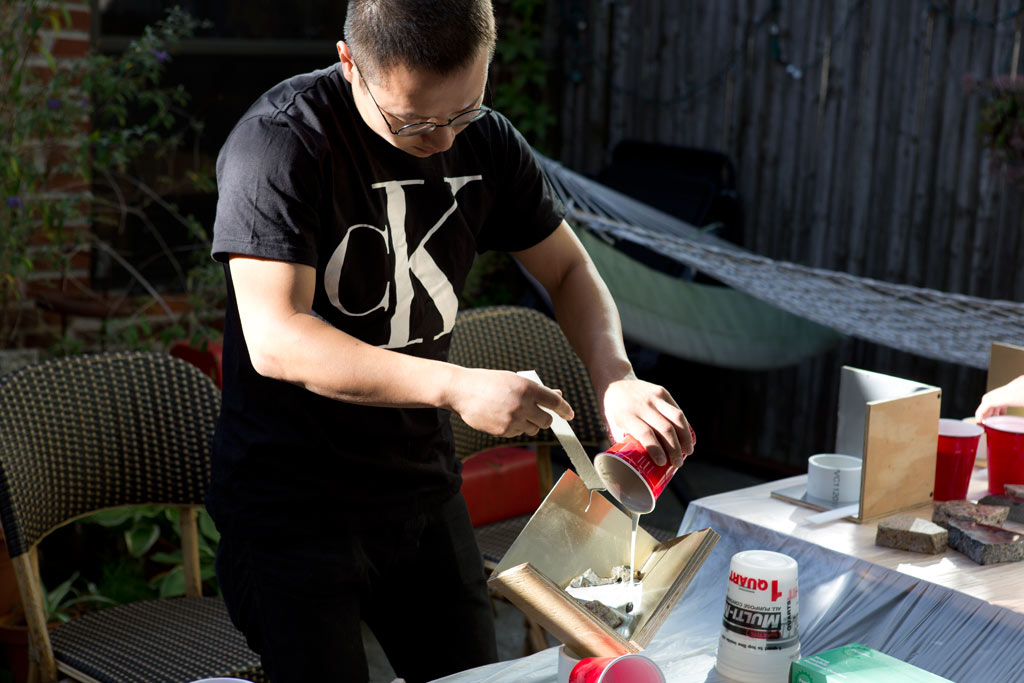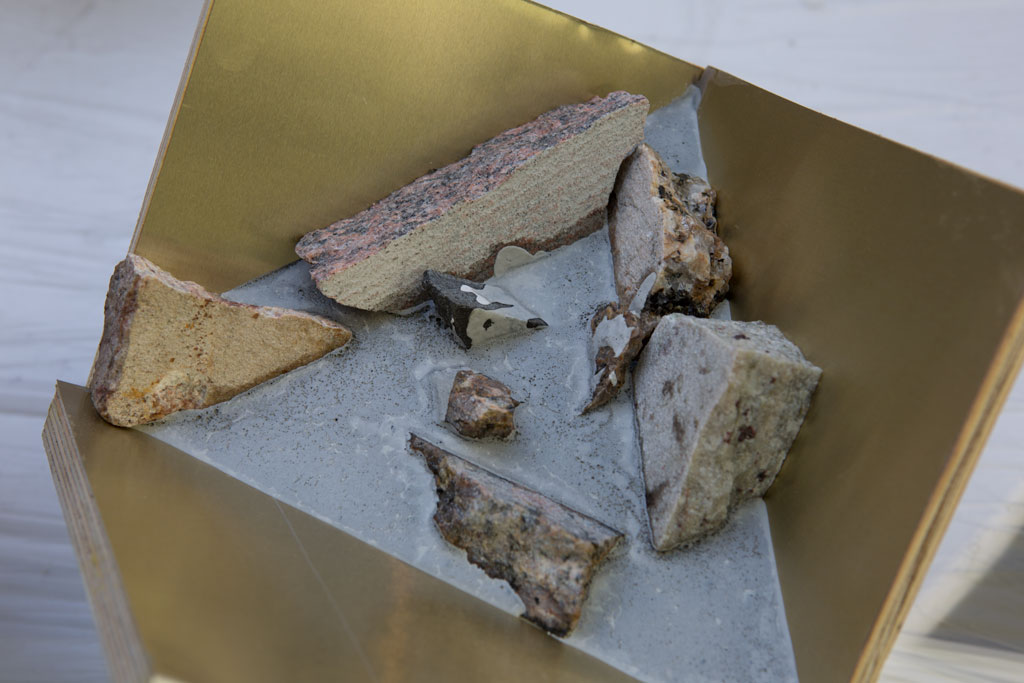Chen-Williams Bookend
DIY bookend instructions from the dynamic duo behind Chen-Williams

Last week, HTC hosted a design tour of New York City, with visits to some of the area’s top designers and creative thinkers. We got to join in for a workshop in the backyard of The Future Perfect with Chen Chen and Kai Williams, the Brooklyn-based duo behind Chen-Williams. The designers, whose recent collaborations have birthed some truly fantastic art and experimental products, gave our small group a lesson in making a DIY bookend with found materials and basic ingredients. We caught up with Chen to get some insight into the birth of the bookend and their design process.

Where did you get the idea for this project?
The project arose when my friend Brent Dzekciorius was working to open the Phillips de Pury design shop on Park Avenue. It was 3 days before the store was set to open and he realized he needed a way to hold up all of the books. I had seen renderings of the design and knew that it was going to be all very geometric in high gloss MDF. There was no way I was going to be able to design and make something that could match that kind of finish in the few days I had. I decided to go the exact opposite route and make something very raw. It is kind of like making a super-sized terrazzo and also with the clashing stone patterns it references the way Ettore Sottsass would use clashing Formica patterns.

What are the materials and where did you get them?
There are lots of stone yards in our neighborhood and if you ask them, most will allow you to scavenge the small, chipped-off pieces scattered throughout their lots.

The cement we use is called Rockite. It is a very fine cement that will give a very good finish. The mold is lined with aluminum flashing (available in any construction materials section of any big box hardware store), the fine cement picks up the super smooth finish of the aluminum.

How do these simple DIY projects compare to what you guys do on a regular basis?
We use a lot of everyday materials in our work. For example, a beer can makes a great mold because it is rigid when it is full, but once you crack it, and pour it out, it’s a ribbon-thin piece of aluminum that will release from whatever you cast with ease. I think we combine super-simple DIY techniques in a lot of the work that we do. We obviously have a lot more tools available to us but I think the mentality is the same. Also, from a manufacturing perspective, if you’re using common materials, it’s easy to source everything.

Also, a simple process makes the object feel more honest, less contrived. You can describe the process used to create all of our objects in one sentence. The objects may be very ornate but the process is always very minimal.

Keep your eyes peeled in the next week for the launch of the Chen-Williams e-shop, where the pair will be selling custom-made knives from found materials. These shanks will be the premiere product for the “Shank Shack,” which will attempt to sell 30 shanks in 30 days.
See more images in the slideshow.















